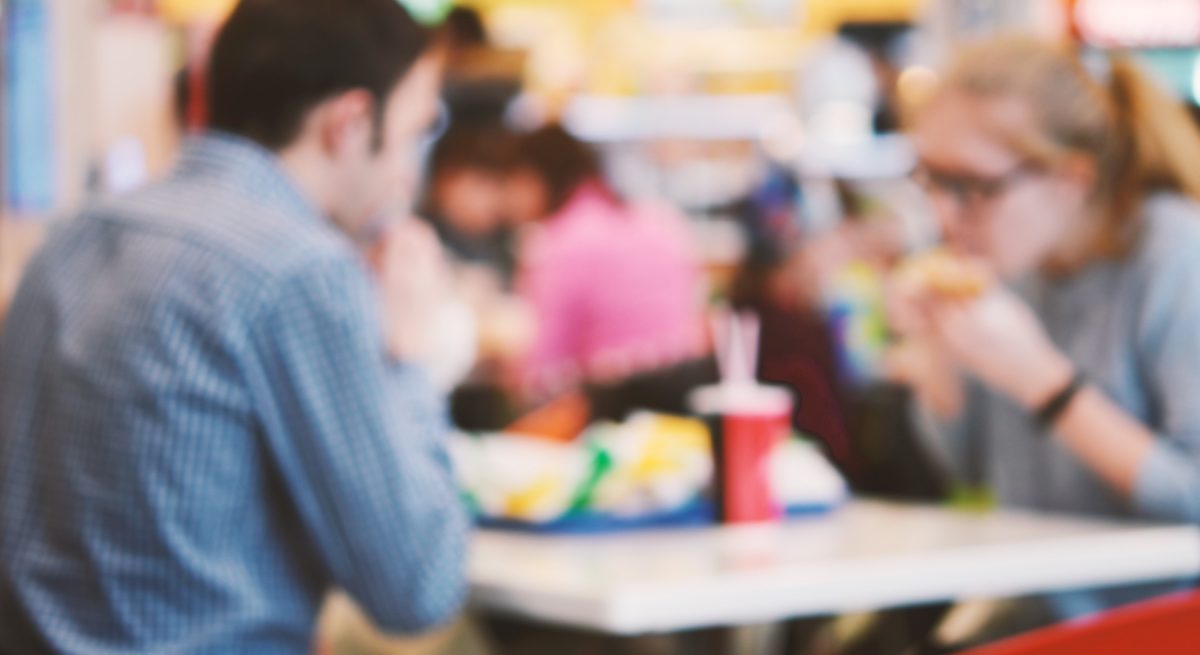‘Bring the Dining Room Experience to the Windows’
4 Min Read By MRM Staff
To get a pulse on QSR trends in 2022, Modern Restaurant Management magazine reached out to David Vance, Vice President of QSR at Mood Media, an on-premise media solutions company dedicated to elevating the customer experience. Joining Mood in 2018, he currently oversees the QSR team, focused on North America Account Management efforts.
How is QSR ownership changing?
Every minute! We continue to see mass transfer of ownerships across many big brands. Large franchisees selling off assets to peers, acquisitions, and mergers are the norm. After years of franchisees acquiring corporate sites, it seems as if that trend has reversed, as corporate entities are now looking to enlarge their footprint.
What do guests want from QSRs now and how is that changing?
Great question. Simply put, the experience should look, feel, smell, and sound differently from their last visit in 2019. Attention is the new currency, and no empathy will be felt from the guest's perspective if the experience has not evolved since the world reopened. Creative and impactful solutions that reach today's guests should be at the top of everyone's list. That being said, if attention is truly the new currency, then first impressions are also more important than ever.

How do you see menus and loyalty evolving?
The evolution is already upon us. After two years of mobile ordering by consumers, menus are becoming more and more interactive both inside and outside. Touchscreens, kiosk ordering, facial recognition, and AI technology will become the norm. Down the line, menus will become practically customized to the individual consumer. There are also more elevated analytics available that allow for a greater understanding of QSR consumer behavior. Menus as well as music, signage, and messaging – all loyalty evoking – should be managed and dayparted accordingly. For example, the diners at an establishment at 6 a.m. and their buying tendencies are completely different from the noon, 3 p.m., and 7 p.m. diners. Should the customer and employee experience not be altered to fit that lifestyle? Of course it should!
How can the drive-thru experience become more personalized?
The personalization of drive-thrus began internally across many brands a few years back. The "timed" drive-thru waits of customers were always essential for the bottom-line of the business, but the flaw continued to be, ‘How do we not only have our employees engaged in the effort, but have their commitment to speed of service as well?’ With the advent of multiple timer loops, gamification, and branded local, regional, and national statistics (rankings) available to the staff, the drive-thru experience has become more personalized to even the day one employee.
For the future, as upward of 80-90 percent of business now takes place in the drive-thru and pick-up lanes, it is essential for every site to bring the dining room experience to the windows. Cardboard and static signage, antiquated Menu boards, aging sound systems, and a lack of customer engagement throughout their purchasing experience just doesn’t cut it anymore. Digital screens, music, higher quality sound, and even scent will and should be a part of the drive-thru experience.
Creative and impactful solutions that reach today's guests should be at the top of everyone's list.
Why and how is scent a new frontier for QSR?
QSR is one of the last verticals to embrace scent as a sensorial branding tool, which is strange considering the amount of changing menu items they could be pushing, plus exploring options like malodor masking, branded identities, and cleanliness. However, I believe the new frontier lies outside in the drive-thru lane. Without stepping through the threshold of the front door, the business loses aromas of Vanilla, Coffee, Grills, Fries, and so much more, which drives customer impulse purchases.
Obviously, a person must roll down their window at some point during the drive-thru transaction, and as the lines have grown longer, windows are coming down earlier. I don't believe there is a more powerful medium than a strategically placed Scent Platform BEFORE the Speaker-Post and Menu Board. With my children, I’m definitely not getting out of that lane without ice cream if the aroma of caramel is present!
What advice can you share to improve employer/employee relations and help retention?
Let's face it – none of us are in the field as much as we were in 2019 – visiting with staff, training in-person, celebrating accomplishments, participating in local community efforts as a team, and everything else the human touch helps to bring to a business and its employees. The good news is that there is still a captive audience in place, so the key becomes one's imagination.
Businesses should be asking themselves, 'What do I want to communicate and what is my strategy behind the message?’ For example, employee (back of the house) digital signage is quickly growing across all brands and I believe by the end of the year almost every kitchen and/or breakroom will have screens deployed for communication.
Attention is the new currency.
Establishing a keen strategy of information – spanning content that inspires, promotes, entertains, trains, reinforces safety precautions, shares company initiatives, highlights employees of the month, and more – allows for robust communication and greater overall connection with team members, from the smallest to the largest brands.
Why is communication a key to restaurant efficiency?
I'm not sure anything could be more important than communication in today's times. Technology has advanced a great deal over the past two years, while dining rooms have shrunk and brick-and-mortar businesses were largely re-engineered. This is in addition to menu changes, supply-chain issues, world events, closings, the evolution of to-go, and the rise of delivery companies, which are just a few of the items that every employee, new or tenured, has on their radar. An uninformed employee is far more likely to become an ex-employee or even worse, the competitor down the street’s employee.
Although I realize during 2020-21 that business expenditures had to be cut, I've been somewhat surprised that it's taken restaurants quite a bit of time to get back to the, ‘How is my employee's experience?’ focus, which should be question 1b after the customer experience. Communication, Back of the House Signage, Music, and Messaging are all key elements that improve not only efficiency but overall experience as well.

